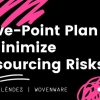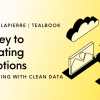We’ve all been there: you pick up an incoming call to hear silence...or a request for personal information...or a recorded message...only to regret picking up the call. But you’ve also probably been on the other side: you’ve ignored a call from a number you don’t recognize only to find out it was the delivery driver looking to validate your address...the bank calling to let you know there has been suspicious activity on your card...or the doctor calling with updates from your last appointment. With the increase in fraudulent or scam calls in recent years, many of us have simply been conditioned to ignore unknown numbers, even if it does mean missing some calls actually meant for us. Caller ID is the little feature that allowed people to make an educated guess on whether to “screen” a call versus answering every call that came through. While it was testing in the 1970s and 1980s, Caller ID was rolled out broadly in the early 1990s and with it came FCC regulations to manage use and control. Below is a quick history of key regulations that relate to or effect Caller ID services:
- 1994: Caller ID rules became effective, including the requirement that Caller ID be transmitted to connecting carriers and allow callers to conceal their number by dialing *67
- 2004: Caller ID rules for telemarketers required that they transmit Caller ID information and prohibited the blocking of that information
- 2009: The Truth in Caller ID Act established that manipulating Caller ID (aka “spoofing”) is illegal in cases where it is used with the intent to “defraud, cause harm or wrongly obtain anything of value”
- 2017: The FCC updated the rules to allow carriers to proactively block calls that come from numbers that do not or cannot make outgoing calls (aka Do-Not-Originate [DNO] lists) and to block calls based on subscriber requests to block
The 2009 and 2017 rules deal directly with “spoofing,” the process by which a caller masks or manipulates their originating number. With the rise in internet/VoIP calling, the ability to actually spoof Caller ID became more convenient/less traceable, which led to a rise in fraudulent calling schemes. There are certainly legitimate reasons to spoof Caller ID (e.g., call centers may want to display a central number to call back, doctors or other professions that tend be “on-call” may want to block their personal cell phone numbers when calling patients), but many of us are likely more familiar with the fraudsters and scammers who use spoofing for nefarious uses. Neighbor spoofing, a specific type of spoofing where the calling number features the same area code and first three digits (NPA-NXX) as the recipient’s number so as to appear familiar, has gained a lot of traction in the past few years. This has increased the total number of spam/scam calls and inspired numerous fines from the FCC.
Consumer Impacts of Unwanted Calling
The FCC estimates that consumers receive 98 million robocalls daily! In addition to simple annoyance, many robocalls have more serious consequences. Many consumers have been persuaded by these calls to release personal or banking information, pay fines or provide information to receive benefits (e.g., the “IRS” scam), or generally get roped into some unwanted information exchange.
Solutions for the Consumer
Robocalls, fraudulent calls and spam calls leave consumers asking for a solution. First, consumers are hoping to avoid getting these calls and keep themselves and their loved ones from being taken for a ride. Second, consumers are eager for a way to flag suspicious calls or provide some information on suspected origin or type to make more educated decisions when answering calls. The wireless carriers have reacted to this customer frustration in different ways with a few similar offerings:
- Verizon Wireless offers an add-on service called “Caller Name ID” for $2.99/month. This service communicates a risk level associated with the originating number, allows you set up a spam filter and block list, and pulls in caller details for unknown numbers.
- Sprint went the “paid-for feature” route as well to offer something called “Premium Caller ID” for $2.99/month. This service displays caller names for those not in your contacts and, depending on the device, provides indicators around likely spam calls.
- AT&T Mobility offers an app-based solution called “Call Protect” that provides automatic fraud blocking and suspected spam call warnings – there is a free basic version and an enhanced version for $3.99/month. The enhanced version provides additional caller ID information, allows for reverse number lookup and enables users to create/manage call-blocking controls.
- T-Mobile offers a variety of options: two free solutions called “Scam ID” and “Scam Block” which checks against T-Mobile’s database and automatically blocks fraudulent calls or provides a “spam likely” warning. They also offer a service called “Name ID” for $4/month which allows you to see any name, personal number or type of organization associated with the call and block the number if necessary.
Currently, the FCC does not require carriers to offer these solutions for free, but it does require that they offer some type of service to consumers. These features allow consumers to make better informed decisions and can actually decrease the number of unwanted calls by blocking known fraudulent callers. This is something to keep an eye on in terms of what your carrier offers (and at what price point) and if the FCC will step in to make these services required from a basic plan or “no cost” standpoint.
Business Impacts of the Consumer Solutions
While government regulations and the solutions provided by wireless carriers are designed to protect consumers, they’ve also had an impact on the enterprise side. Legitimate businesses that are heavily dependent on call-through and answer rates have likely seen a change in these volumes since the November 2017 rules were put into effect. Because the rules and services on the market favor consumer protection, many classifications of numbers or analytic engines behind spam or fraud protection are driven by consumer reporting.
This has spawned a relatively new set of services aimed at helping companies optimize their outbound calling by managing and optimizing Caller ID Name information. There are a number of Caller ID Name (CNAM) databases in use (as opposed to one central “source of truth”) for Caller ID Name. The receiving caller, carrier or plan will determine which CNAM is queried as they receive an incoming call. There are a several ways these services look to improve an organization’s outbound calling and associated answer rates. First, these services allow organizations to understand how their numbers are labeled and promote accuracy and consistency. By first understanding what Caller ID Name appears across these databases, organizations can work with different service providers to display a consistent name across CNAMs, phone numbers and networks, and even add branding or personalization to the Caller ID information displayed. In theory, if consumers can see and recognize the name, they will be more likely to answer. Second, these services support registering verified numbers with the carrier to improve accuracy of labeling or reduce automatic blocking, and can monitor and inform the various analytic engines of mislabeling (to potentially be corrected). Lastly, some of these services can report on complaints to the FCC about calling behavior (e.g., calling outside of defined business hours) and that allows organization to focus on training for their calling agents or other ways of improving consumer experience with calling.
As solutions look to increase consumer awareness of who is calling and prevent fraudulent calls, the services available to organizations to ensure their legitimate calls get through will continue to evolve. Given that regulations continue to transform, we are likely to see some push and pull between the consumer and enterprise side and solutions to help both. Until then, keep an eye on your mobile and the reporting you see come through!
Region:









